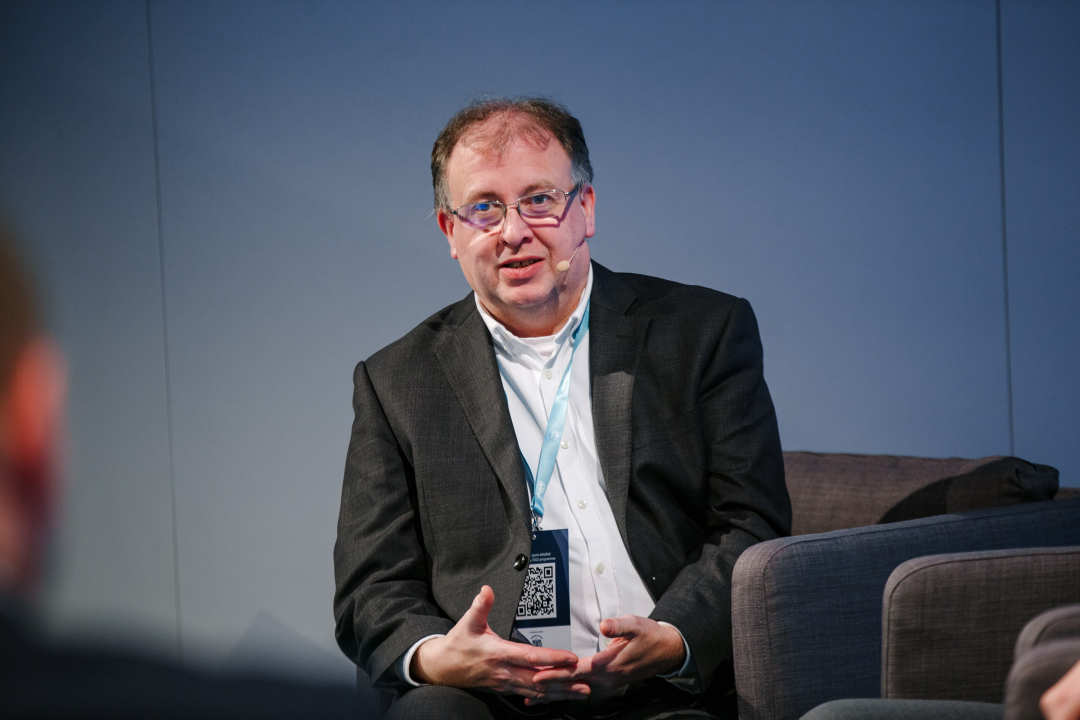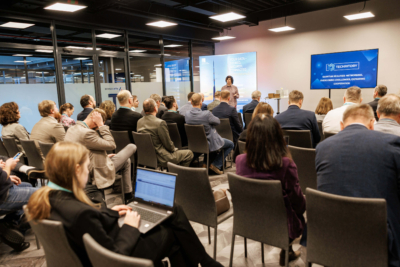What does the future of railways look like? We spoke to Andy Billington, Innovation and Digital Architecture Senior Expert at RB Rail AS, the coordinators of the Rail Baltica project, about the future of railways, the shift to adopting commercial off-the-shelf (COTS) solutions, and the potential of digitalisation in new infrastructure projects.
On day #1 of 5G Techritory, you’ll deliver a keynote on railways fit for the future, entitled “Digital Railways for the 2020s, 2030s and Beyond”. Are there any particular topics you will be raising?
Andy: There are several. Some are more technical than others when it comes to railway topics, but also some more general principles. For example, over the next few years, railways will have to go through a transition from GSM-R to its successor, the Future Railway Mobile Communications System (or FRMCS). This is a significant change and allows railway infrastructure to be developed with a more “open” approach than has typically been the case.
What do you mean by that?
Andy: For quite a while, railways have used GSM-R – a railway-specific variant of the GSM standard. While this provided a great deal of useful functionality, it was a railway-specific version of a standard, which naturally limited the number of system and component suppliers. This standard is now considered rather old – or very old, by telecoms standards.
With the Future Railway Mobile Communication System (FRMCS), the specifications are being incorporated into the 3GPP standards. It means that the only really railway-specific aspect of the technology is the spectrum allocated. What’s more, FRMCS is being designed as a modular specification, so while the first generation is almost certain to be 5G, upgrades to 6G and beyond (or to other communications technologies) will not require whole systems to be replaced – only modular elements of the system. This trend is also seen in other parts of the railway sector – and from my perspective, that’s definitely a good thing. Modular systems have to be a key consideration: it’s far easier to replace one building block than a monolith.
In what other parts of the sector are you seeing this?
Andy: There is clearly a move away from developing standards and specifications that are entirely bespoke for railways where it is permitted by safety regulations and standards.
Last month, I participated in a digital rail conference where numerous speakers raised the use of COTS equipment, a.k.a. opting for commercial off-the-shelf IT instead of custom rail-specific systems. Additionally, there were discussions about basing railway solutions on well-known standards like MQTT for certain sensor data, and also leveraging virtualisation, containerisation, and insights from the cloud computing sector to enhance flexibility and avoid dependencies on a single supplier. This was seen as a way to improve flexibility and responsiveness, which can also have additional benefits.
Can you give examples of those other benefits?
Andy: Absolutely, and again, this was mentioned by several speakers. There was a clearly expressed view that by moving towards commonly-used IT solutions for hardware – for streaming data, for managing “big data” analytics, and so on – the rail sector could create a more attractive working environment to bring people into the industry. Many speakers reflected on skills shortages and lengthy training processes for industry-specific systems, and thus the consensus in discussions was that using “off-the-shelf” software and hardware can help.
Given that 5G Techritory is not a railway-focused conference, what are other topics you’re looking to raise on the stage?
Andy: The move towards modular systems in FRMCS is also reflected in other areas. For example, a modular architecture is being developed for CCS (simply put, signaling and traffic management) so that elements can be replaced without having to swap out entire systems.
There are also specific opportunities we have at Rail Baltica as a ‘greenfield’ project that would be harder for others to retrofit – for example, something as seemingly simple as component labeling using a consistent cross-supplier, cross-sector standard can drive significant opportunities in the supply chain, in maintenance, and in areas such as overall asset management. Others in the rail sector, notably in Australia as well as parts of Europe, are also working in these areas, and we are keen to apply their experience where we can.
Besides your keynote, you are also participating in 2 panel discussions. Could you describe the topics these discussions are likely to cover?
Andy: The panel discussion, “Autonomous trains” (Oct 19, 11:00 EEST), is more railway-specific, discussing autonomous trains and the possible levels of automation with other railway sector organisations. I would expect this to be the more technical and certainly the more rail-specific of the two.
The other panel discussion, which is part of “Digital Railways for the 2020s, 2030s and Beyond” (Oct 18, 17:00 EEST), might be more interesting for a general audience, as we’ll be discussing digital opportunities in new infrastructure projects. Among the panelists will be a UK-based global telecoms industry analyst and a representative from the Ministry of Digital Transformation in Ukraine.
One of the topics we’ll be discussing is the “dig once” principle – it’s when carrying out large-scale infrastructure projects, consideration should be given to what else can be delivered safely and efficiently at the same time. We will also discuss the opportunities to use digitalisation to improve both the delivery process and the quality of the infrastructure that is delivered. And I’m sure other topics will also emerge.
About RB Rail AS
RB Rail AS is a multinational joint venture of Estonia, Latvia, and Lithuania established to lead and coordinate the implementation of the Rail Baltica Global Project, the first infrastructure development project of this scale in the Baltic region. More about Rail Baltica global project can be found at www.railbaltica.org



